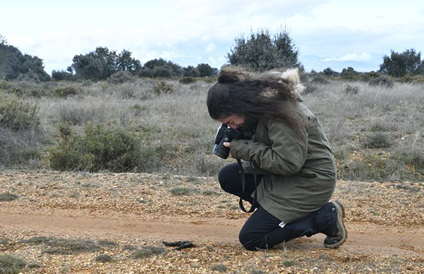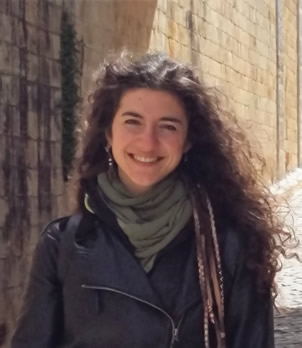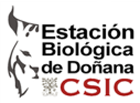|
Research interests
My research interests lie in the fields of ecology, evolution and conservation biology. Integrating ecological and evolutionary questions and using canids as model species, I hope to obtain insights for conservation strategies in animal populations.
Current work
I am currently working as a postdoc researcher in the project WOLFNESS-Biodiversa+ to unravel wolf-dog hybridization across Europe.
Previous work
Before I became engaged in this promising project, I have worked in the following research lines:
In my PhD thesis, with Carles Vilà and Jennifer Leonard as supervisors, I studied the impact of historical population declines on the genomic diversity in gray wolf populations (Canis lupus).
During my bachelor I studied altitudinal variation in wing shape in Parnassius apollo through geometric morphometrics tools, under the supervision of Juan Gabriel Martínez Suárez in the Department of Zoology (University of Granada, Spain).
My Master Thesis project “Influence of phenology in primary productivity on the population abundance of the European rabbit” supervised by Néstor Fernández in the Doñana Biological Station (Spanish National Research Council) gave me the opportunity to focus on conservation biology and acquire statistical skills analyzing large datasets using R software.
After finishing my master, I was involved in the study of the role of pheromones in the success of a global invader, the Argentine ant (Linepithema humile), with Elena Angulo and Paloma Álvarez in the Doñana Biological Station (Spanish National Research Council).
Additionally, I have worked as lab and field technician with Martina Carrete in the Department of Physical, Chemical and Natural Systems in the University Pablo de Olavide (Seville, Spain) assisting in several techniques in the fields of marine zoology, biological invasions and edaphology.
Publications
Peer-reviewed Articles
9 |
Potential adaptive introgression from dogs into Iberian grey wolves (Canis lupus)
Sarabia C, Salado I, Fernández-Gil A, vonHoldt BM, Hofreiter M, Vilà C, Leonard JA (2025)
Molecular Ecology e17639
| |
Link |
|
8 |
Large variance in inbreeding within the Iberian wolf population
Salado I, Preick M, Lupiáñez-Corpas N, Fernández-Gil A, Vilà C, Hofreiter M, Leonard JA (2024)
Journal of Heredity 115, 349–359
| |
Link |
|
7 |
FAIR data would alleviate large carnivore conflict
Selva N, Bautista C, Fernández-Gil A, de Gabriel Hernando M, García-Rodríguez A, Naves J, Calzada J, Díaz-Fernández M, Díaz-Vaquero V, Leonard JA, Morales-González A, Naves-Alegre L, Quevedo M, Salado I, Vilà C, Revilla E (2023)
Science 382, 893-894
| |
Link |
|
6 |
The variability of iridomyrmecin, the venom of the Argentine ant, in its native and invasive ranges
Salado I, Álvarez-Blanco P, Boulay R, Blight O, Abril S, Cerdá X, Angulo E (2023)
Chemoecology https://doi.org/10.1007/s00049-023-00381-3
| |
Link |
|
5 |
Loss of mitochondrial genetic diversity despite population growth: the legacy of past wolf population declines
Salado I, Preick M, Lupiáñez-Corpas N, Fernández-Gil A, Vilà C, Hofreiter M, Leonard JA (2023)
Genes 14(1), 75
| |
Link |
|
4 |
Automated genotyping of microsatellite loci from feces with high throughput sequences
Salado I, Fernández-Gil A, Vilà C, Leonard JA (2021)
PLoS ONE 16(10): e0258906
| |
Link |
|
3 |
A sliver of the past: The decimation of the genetic diversity of the Mexican wolf
Taron UH, Salado I, Escobar-Rodríguez M, Westbury MV, Butschkau S, Paijmans JLA, vonHoldt BM, Hofreiter M, Leonard JA (2021)
Molecular Ecology 30, 6340–6354
| |
Link |
|
2 |
Towards high-throughput analyses of fecal samples from wildlife
Sarabia C, Salado I, Cornellas A, Fernández-Gil A, Vilà C, Leonard JA
Animal Biodiversity and Conservation 43.2, 271-283 |
|

|
|
1 |
Mortandad de reptiles por caída a un canal de conducción de agua en el Parque Natural de Sierra Nevada (Granada)
León R, Fernández-Cardenete JR, Yeste A, Salado I, Serrano A, Zavia A, Santa M (2015)
Boletín de la Asocicaión Herpetológica Española 26(1), 81-85 |
|
 |
|
Outreach

|
The role of habitat selection and local adaptation in the population structure of an apex predator
Salado I (2021)
Genetics Society News 85, 55-56
Here I describe a bit the non-invasive genetic monitoring of a wolf population that my colleages and I did during autumn of 2020.
It was funded by an Heredity Fieldwork Grant from the Genetics Society.
|
|



